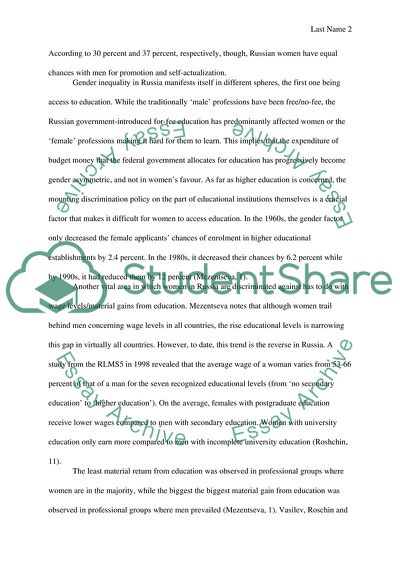Cite this document
(Gender Inequality in Russia Coursework Example | Topics and Well Written Essays - 2000 words - 1, n.d.)
Gender Inequality in Russia Coursework Example | Topics and Well Written Essays - 2000 words - 1. https://studentshare.org/gender-sexual-studies/1752300-gender-inequality-in-russia
Gender Inequality in Russia Coursework Example | Topics and Well Written Essays - 2000 words - 1. https://studentshare.org/gender-sexual-studies/1752300-gender-inequality-in-russia
(Gender Inequality in Russia Coursework Example | Topics and Well Written Essays - 2000 Words - 1)
Gender Inequality in Russia Coursework Example | Topics and Well Written Essays - 2000 Words - 1. https://studentshare.org/gender-sexual-studies/1752300-gender-inequality-in-russia.
Gender Inequality in Russia Coursework Example | Topics and Well Written Essays - 2000 Words - 1. https://studentshare.org/gender-sexual-studies/1752300-gender-inequality-in-russia.
“Gender Inequality in Russia Coursework Example | Topics and Well Written Essays - 2000 Words - 1”. https://studentshare.org/gender-sexual-studies/1752300-gender-inequality-in-russia.


